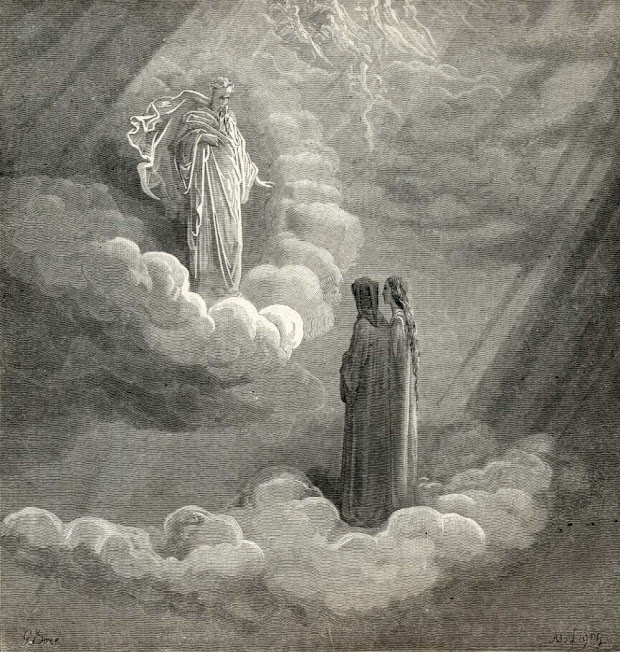Our visual image of Victorian London is largely fixated on its sordidness—cramped streets, dark alleys, desolate slums, overcrowding, and illicit dens. Two people are responsible for creating in our heads such pictures of destitution and filth—one is Charles Dickens, whose works largely revolved around grinding poverty, and the other is French illustrator Gustave Doré. Doré (1832 – 1883) was a prolific engraver, artist, illustrator, and sculptor, who became very popular both in France and England by being an extremely successful illustrator for books and magazine.
He began his career early—at the age of fifteen—working for the French paper Le journal pour rire. Before he was twenty-five, his illustrations had adorned the books of several prominent writers of his time such as Cervantes, Rabelais, Balzac, Milton, Byron, and Dante. His illustrations of Cervantes's Don Quixote left such an indelible impression on the collective imagination of the public that it forever changed how subsequent artists, stage and film directors would represent the various characters in the book in their medium. Doré's illustrations for the English Bible in 1866 was such great success that it earned him a major exhibition of his work in London, eventually leading to the foundation of his very own Dore Gallery.
In 1869, Dore teamed up with journalist Blanchard Jerrold to produce a comprehensive portrait of London. For the next four years, Jerrold and Dore explored the dark underbelly of the largest, most fashionable, and most prosperous city in the world, visiting night refuges, staying in cheap lodging houses and making rounds of the opium den. The duo were often accompanied by plain-clothes policemen. They travelled up and down the river and attended fashionable events at Lambeth Palace, the boat race and the Derby.
Note: Doré produced so much work that I will feature his work in two tranches. This first series features works by Doré from 1847 to 1870. A later series will feature works from 1867 to 1883.
This is part 2 of a 12-part series on the earlier works of Gustave Doré:
 |
| 1852 The Lost Cow oil on canvas 130 x 90 cm |
%20%2031.9%20x%2038%20cm%20Museum%20of%20Fine%20Arts,%20Boston,%20MA.jpg) |
| 1854 Friar John and Panurge. study for wood engraving illustration for Rabelais' Gargantua 31.9 x 38 cm Museum of Fine Arts, Boston, MA |
 |
| 1854 Friar John and Panurge. wood engraving |
%20Philadelphia%20Museum%20of%20Art,%20PA.jpg) |
| 1854 Illustration from La Ménageire Parisienne lithograph 23.5 x 29.5 cm (image) Philadelphia Museum of Art, PA |
%20Detroit%20Institute%20of%20Arts,%20MI.jpg) |
| 1854 Vultures lithograph printed in black ink on wove paper 21.9 x 28.6 cm (image) Detroit Institute of Arts, MI |
 |
| 1854c Street Scene lithograph on wove paper 26.5 x 32.4 cm National Gallery of Art, Washington, DC |
%20Art%20Institute%20of%20Chicago,%20IL.jpg) |
| 1855 Brother Angel lithograph in black on off-white China paper 19.8 x 29.9 cm (image) Art Institute of Chicago, IL |
%20Art%20Institute%20of%20Chicago,%20IL.jpg) |
| 1855 La Rue de la Vieille Lanterne: The Suicide of Gérard de Nerval lithograph in black on light grey China paper 50.2 x 34.4 cm (image) Art Institute of Chicago, IL |
%20aka%20The%20injured%20Child%20oil%20on%20canvas%20194.9%20x%20130.8%20cm.jpg) |
| 1853 Les Saltimbanques (The Entertainers) aka The injured Child oil on canvas 194.9 x 130.8 cm |
%20aka%20The%20injured%20Child%20oil%20on%20canvas%20224%20x%20184%20cm.jpg) |
| 1874 Les Saltimbanques (The Entertainers) aka The injured Child oil on canvas 224 x 184 cm |
1854 Les Différents Publics de Paris
(The Different Audiences of Paris - lithographs):

Tiltle Page 
Opéra Italien 
Comèdie Française %20lithograph%20%20lithograph.jpg)
Opèra (la fosse aux Hins) 
Cirque et Hippodrome 
Odéon 
Folies Nouvelles 
Seraphin 
Funambules 
Soirées Fantastiques de Robert Houdin 
Le Theàtre Guignol 
Les abonnès canon du Palais Royal 
Les Lutteurs 
Les jouerus de bóules %20lithograph.jpg)
La Bibliothéque (Salle de travail) 
Amphithèatre de l'École de Médecine 
Cours d'Anatomie Comparèe au Jardin des Plantes 
La Coulisse de la Bourse 
Justice de Paix du 12me Arrondissement 
Les Revues
1855 Episodes from the Eastern War:
.jpg)
Capture of Sebastopol
lithograph 16 x 27 cm (image).jpg)
Capture of Sebastopol
lithograph 15.9 x 26.9 cm (image).jpg)
Capture of Sebastopol
lithograph 15.9 x 27.2 cm (image).jpg)
Capture of Sebastopol
lithograph 16 x 27.2 cm (image).jpg)
Capture of Sebastopol
lithograph 16 x 27.4 cm (image).jpg)
Capture of Sebastopol
lithograph 16 x 26.7 cm (image)
n.d. Episode in the Franco-Prussian War
brush, black and brown ink, graphite, and white over black crayon on brown wove paper 60.3 x 76.2 cm
Detroit Institute of Arts, MI
The Divine Comedy by Dante Alighieri
1901 edition published by Thompson & Thomas, Chicago:




















No comments:
Post a Comment
Note: only a member of this blog may post a comment.